The world of venomous creatures presents a fascinating but deadly paradox: is it more dangerous to encounter an animal with highly toxic venom or one that can deliver large quantities of less potent venom? This question has intrigued scientists, medical professionals, and nature enthusiasts for decades. When assessing the threat posed by venomous animals, two critical factors come into play: venom yield (the amount delivered in a bite or sting) and toxicity (the venom’s potency). Understanding the relationship between these factors is crucial not only for determining which creatures pose the greatest risk to humans but also for developing effective antivenoms and treatment protocols. This article explores the complex interplay between venom yield and toxicity, examining how these factors contribute to lethality across different species.
Understanding Venom Basics
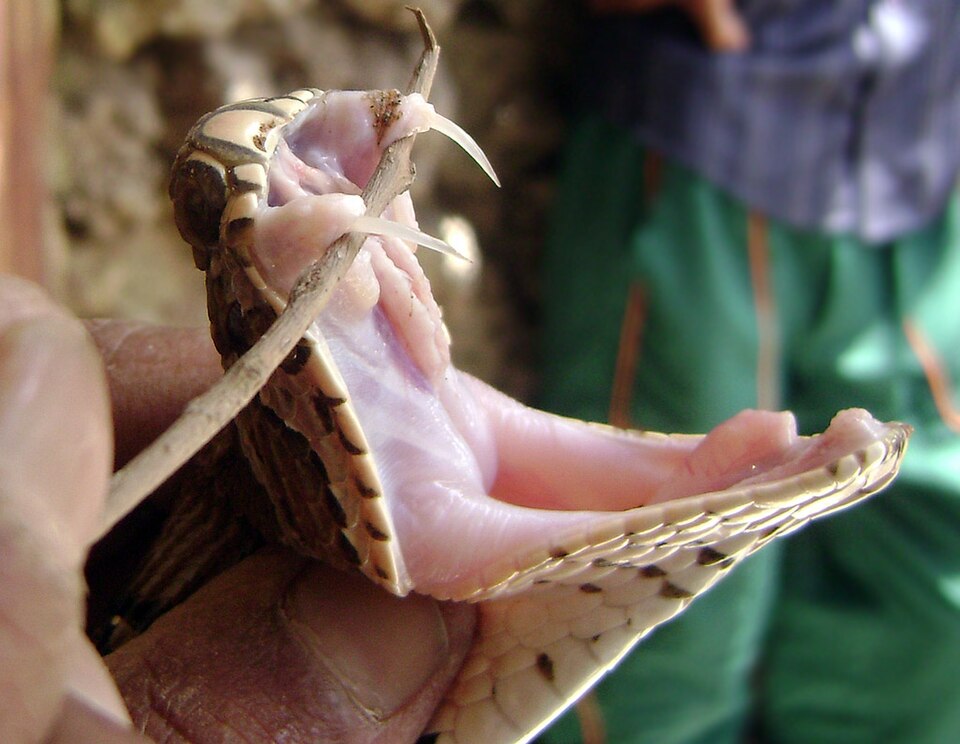
Venom is a complex cocktail of proteins and enzymes produced by specialized glands in animals and delivered through various anatomical structures like fangs, stingers, or spines. Unlike poison, which is harmful when ingested or touched, venom must be actively injected into the victim’s tissue or bloodstream to cause damage. The evolutionary purpose of venom is typically twofold: to immobilize or kill prey and to serve as a defensive mechanism against predators. Different venoms target specific physiological systems, with some causing neurotoxic effects (affecting the nervous system), hemotoxic effects (damaging blood cells and vessels), cytotoxic effects (destroying tissue cells), or myotoxic effects (attacking muscle tissue). The composition of venom varies dramatically across species, with some containing dozens or even hundreds of different toxic compounds, each with specific mechanisms of action.
Defining Venom Yield
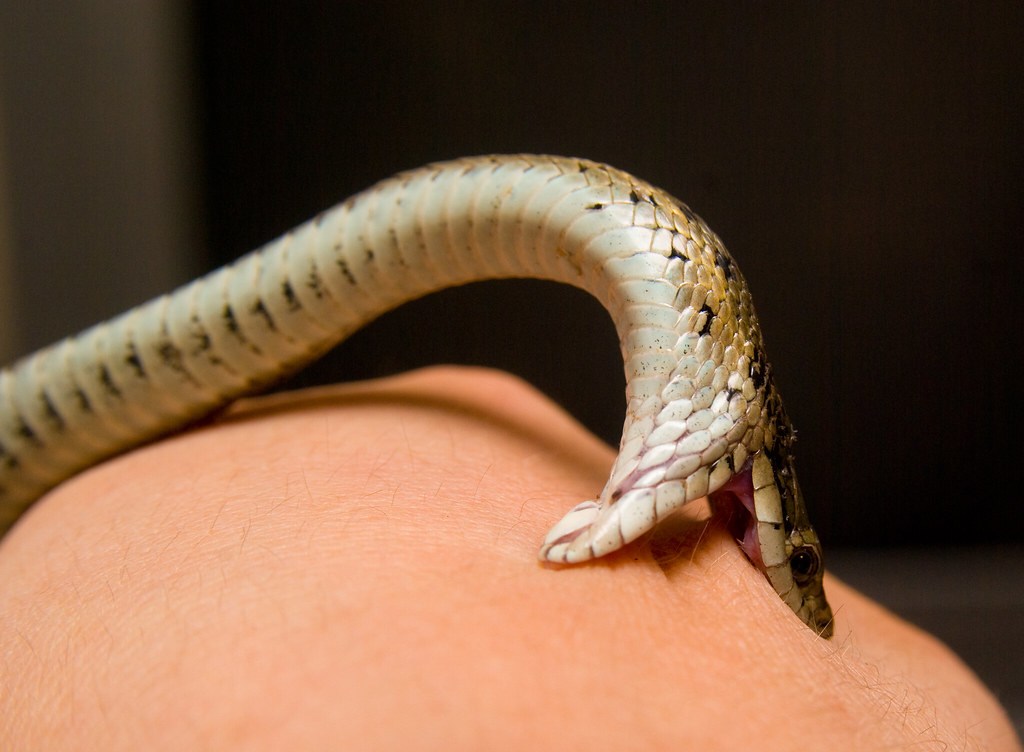
Venom yield refers to the volume or mass of venom that an animal can deliver in a single bite, sting, or envenomation event. This measurement is typically expressed in milligrams of dry weight or microliters of liquid venom. Yield varies significantly between species, with some creatures capable of delivering only minuscule amounts while others can inject substantial volumes. Factors affecting venom yield include the animal’s size, age, health status, and whether it has recently used its venom (as venom glands require time to replenish). Environmental conditions and seasonal variations can also influence venom production. Importantly, many venomous animals can control their venom delivery, sometimes delivering “dry” bites with no venom or partial yields depending on the perceived threat level, making yield a somewhat variable rather than fixed characteristic.
Measuring Venom Toxicity
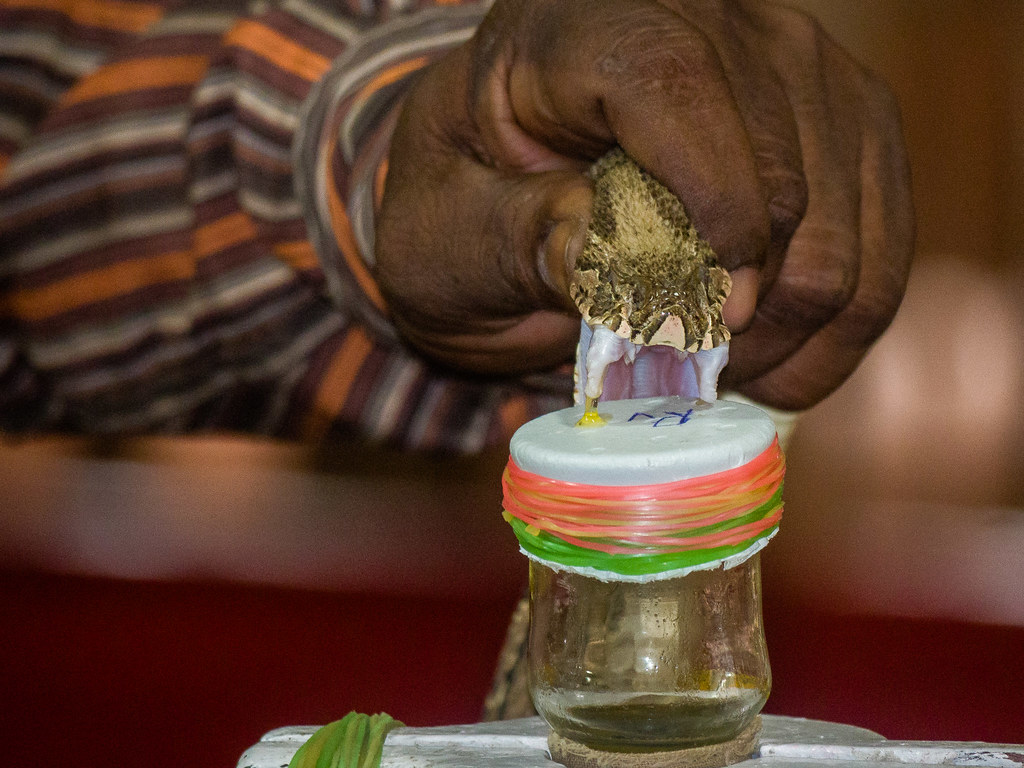
Toxicity is typically measured using the LD50 value—the dose required to kill 50% of a test population, usually calculated in milligrams of venom per kilogram of the test subject’s body weight. A lower LD50 value indicates higher toxicity since less venom is needed to cause death. Scientists determine these values through carefully controlled laboratory studies, though ethical considerations have led to increasing use of alternative testing methods. Toxicity measurements are specific to the test subject, meaning a venom highly toxic to mice might have different effects on humans or other animals. Venom composition can contain neurotoxins (affecting nerve function), cardiotoxins (damaging heart tissue), hemotoxins (affecting blood), cytotoxins (destroying cells), or combinations of these, with each component contributing differently to overall toxicity. This complexity makes direct comparisons between different venoms challenging without considering the specific physiological systems affected.
The Inland Taipan Paradox
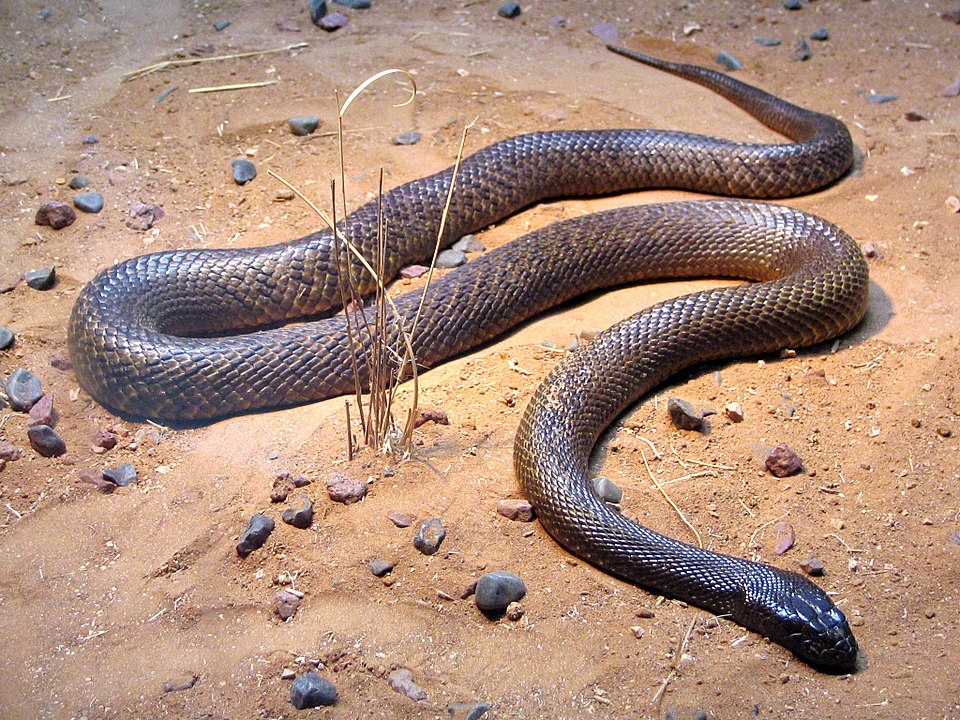
The Inland Taipan (Oxyuranus microlepidotus), native to arid central east Australia, is widely regarded as having the most toxic venom of any land snake based on LD50 tests. A single bite from this species contains enough venom to kill approximately 100 adult humans, with its neurotoxic venom being nearly 200-250 times more potent than that of a common cobra. Despite this extreme toxicity, human fatalities from Inland Taipan bites are exceedingly rare, with no confirmed deaths in recent history. This paradox exists because the snake inhabits remote regions with minimal human contact and typically exhibits shy, reclusive behavior, actively avoiding human interaction whenever possible. The Inland Taipan demonstrates that extreme toxicity alone doesn’t necessarily translate to high human mortality rates if other factors limit actual envenomation events, illustrating the importance of considering behavioral and ecological contexts when assessing real-world danger.
Massive Yielders: The King Cobra Case
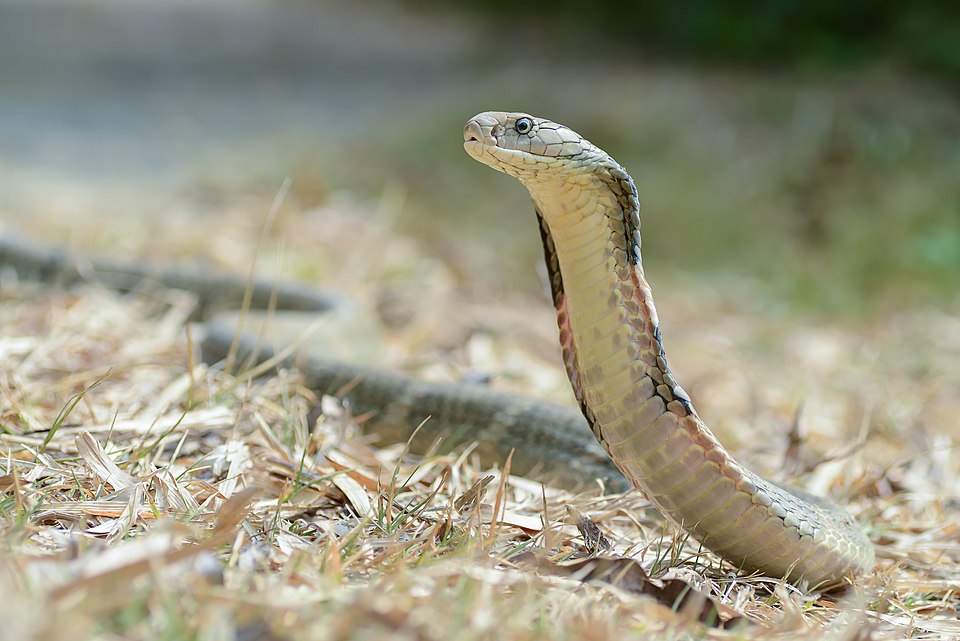
The King Cobra (Ophiophagus hannah) stands out as having one of the highest venom yields among all venomous snakes, capable of delivering up to 7 milliliters (approximately 420mg dry weight) of venom in a single bite. This enormous yield is particularly significant given that the lethal dose for humans is estimated to be only around 20mg, meaning a full envenomation could theoretically kill up to 20 people. Despite its venom being less toxic than many other species on a drop-for-drop basis, the sheer volume makes King Cobra bites extremely dangerous medical emergencies. These snakes have specialized anatomy to support this high yield, including the largest venom glands among all venomous snakes, extending back about one-third of the snake’s body length. The King Cobra’s ability to deliver sustained bites with multiple venom pulses further increases the potential venom load, demonstrating how high yield can compensate for comparatively moderate toxicity to create a deadly threat.
The Box Jellyfish: Toxicity Without Measure
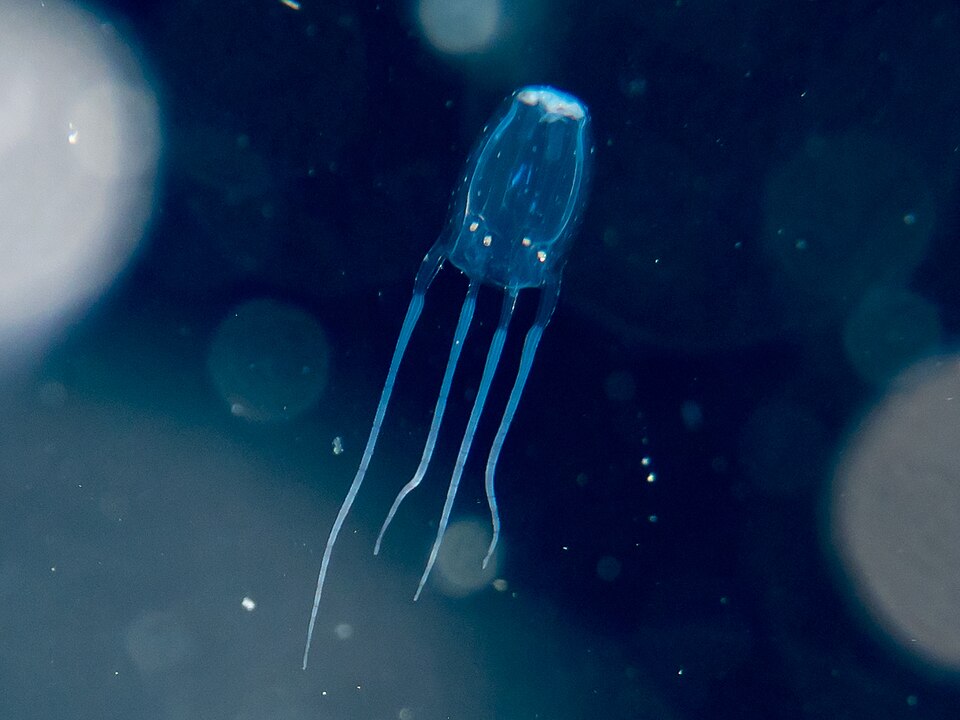
The Box Jellyfish (Chironex fleckeri), found in the coastal waters of northern Australia and throughout the Indo-Pacific, represents an extreme case where extraordinary toxicity makes yield almost irrelevant. Each animal possesses up to 60 tentacles that can grow to 3 meters long, with each tentacle containing thousands of microscopic cnidocysts (stinging cells) that inject venom upon contact. The toxicity of box jellyfish venom is so extreme that a single animal carries enough venom to kill 60 adult humans, with death potentially occurring within minutes after significant exposure. The venom contains compounds that simultaneously attack the heart, nervous system, and skin cells, making it uniquely dangerous even in tiny amounts. Unlike many venomous creatures that need to deliver a concentrated dose through a single bite or sting, the box jellyfish’s distributed delivery system across multiple tentacles means victims often receive numerous simultaneous injections, with the total yield being the cumulative effect of thousands of microscopic stings rather than a single large dose.
The Mathematical Relationship: The Lethality Index
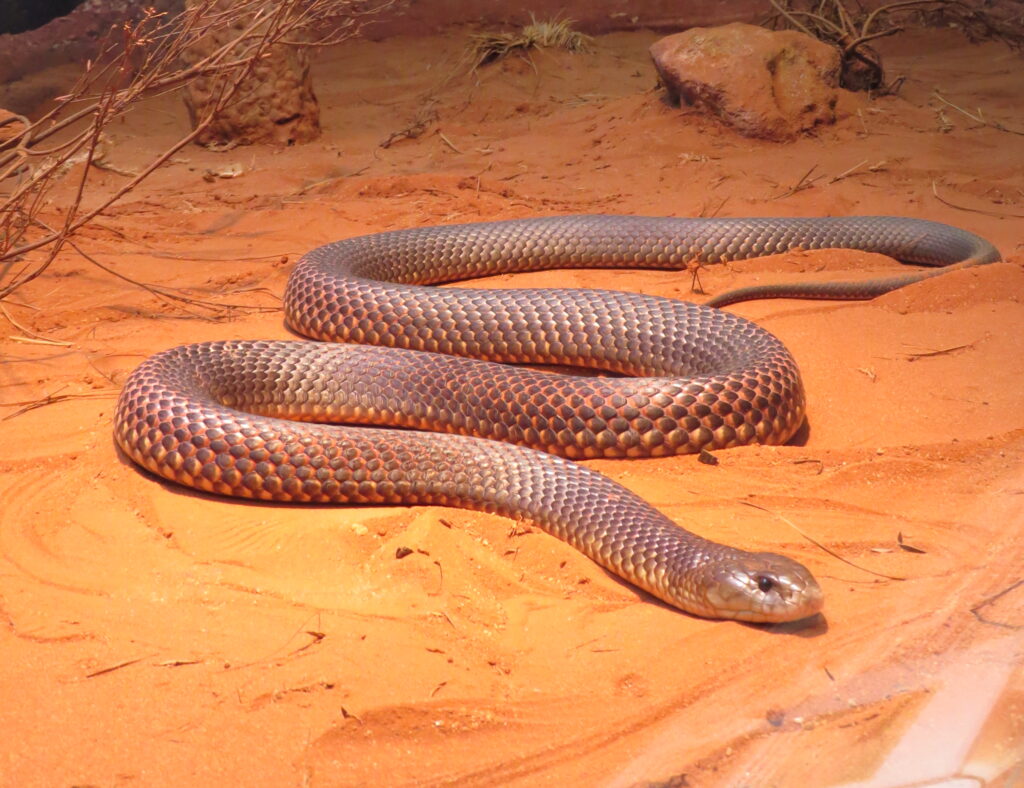
To better understand the relative danger posed by different venomous species, researchers have developed various methods to quantify the relationship between yield and toxicity. One approach is calculating a “lethality index” by dividing the average venom yield by the LD50 value, producing a number that represents how many lethal doses an average envenomation might deliver. This calculation provides a more comprehensive picture of potential danger than either factor alone. For example, while the inland taipan has an extremely low LD50 (high toxicity), its moderate yield gives it a high but not unrivaled lethality index. Conversely, the eastern brown snake has slightly less toxic venom but can deliver more of it, resulting in a comparable lethality index. These mathematical models help contextualize risk but must be interpreted cautiously since they don’t account for variables like likelihood of envenomation, geographical distribution, and human activity patterns in the animal’s habitat—all factors that affect actual human mortality rates.
Spiders: Small Yield, Variable Toxicity
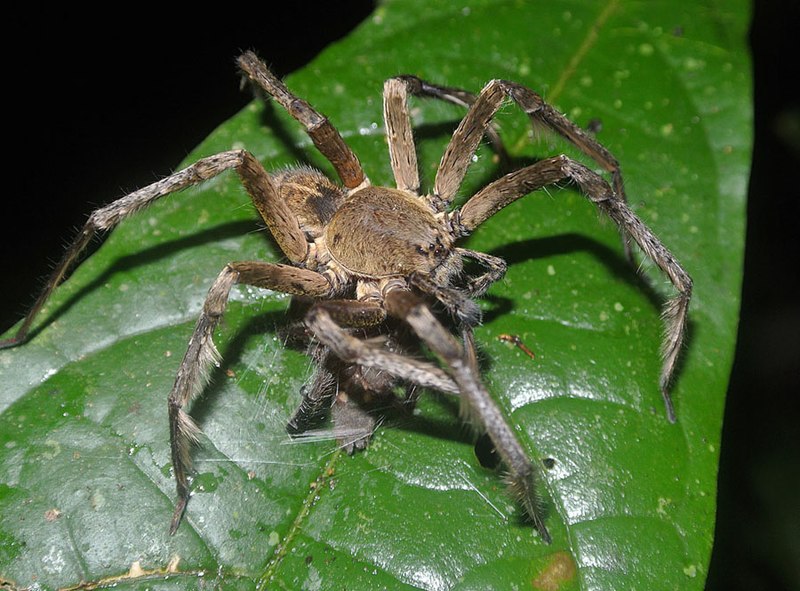
Spiders present an interesting case study in the venom yield versus toxicity question due to their typically small venom yields compared to larger venomous animals. The Brazilian wandering spider (Phoneutria species), often cited among the world’s most venomous spiders, produces only about 0.06-0.10mg of venom per bite, but this small amount can cause severe symptoms due to its potent neurotoxic components. By contrast, the Sydney funnel-web spider (Atrax robustus) can deliver around 0.14mg of venom containing a unique compound called delta-atracotoxin that specifically targets the human nervous system, making it particularly dangerous despite its modest yield. Many spider species practice venom conservation through “dry bites” or partial envenomation, injecting only the amount necessary for the perceived threat. This efficient use of venom demonstrates evolutionary pressure to maximize the effectiveness of small yields, with many spiders developing extremely potent toxins to compensate for volume limitations imposed by their small size and venom gland capacity.
The Adaptable Threat: Cone Snails
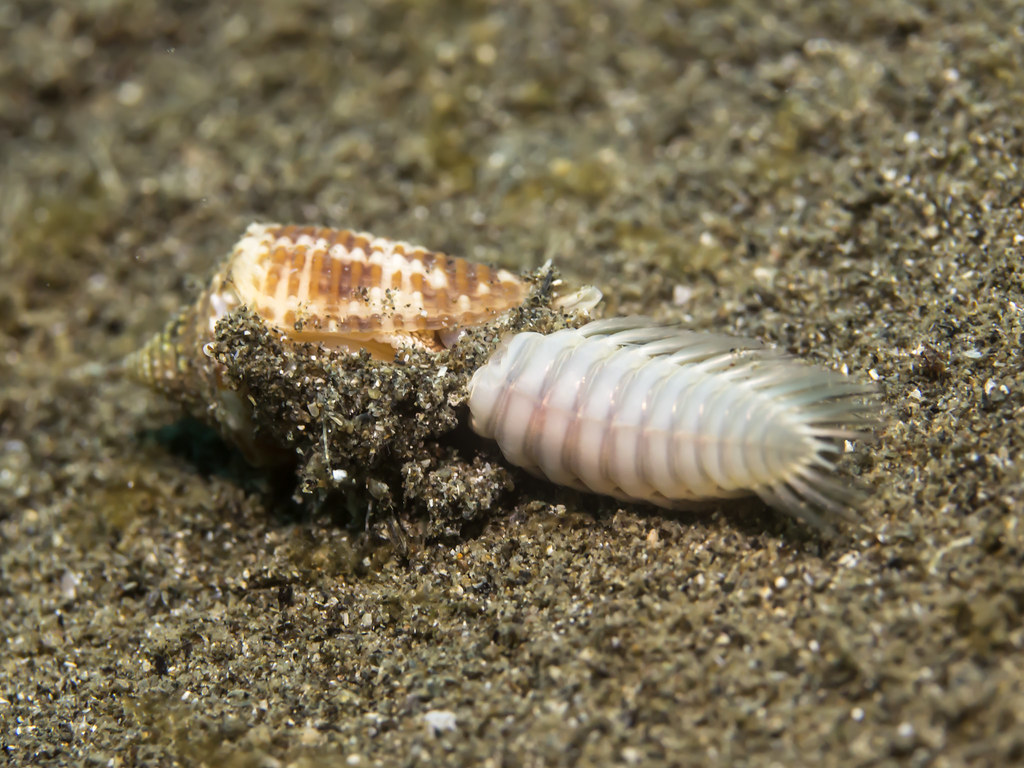
Cone snails (Conus species) represent a fascinating example of how high toxicity can compensate for minimal yield. These marine gastropods produce some of the most potent neurotoxins known, delivered through a specialized hollow tooth that functions like a harpoon. A single cone snail might only inject a few microliters of venom—an exceptionally small volume—yet this minuscule amount can be sufficient to rapidly paralyze fish or, in the case of certain species like Conus geographus, potentially kill a human. The extreme potency of cone snail venom arises from complex cocktails of peptides called conotoxins, which can target specific ion channels and receptors in the nervous system with remarkable precision. Interestingly, cone snails can adjust their venom composition based on whether they’re hunting, defending themselves, or competing with other cone snails, demonstrating sophisticated venom optimization strategies. This adaptive approach to venom deployment illustrates how evolutionary pressures can drive the development of extraordinarily potent compounds when yield is inherently limited.
Venom Delivery Systems and Efficiency
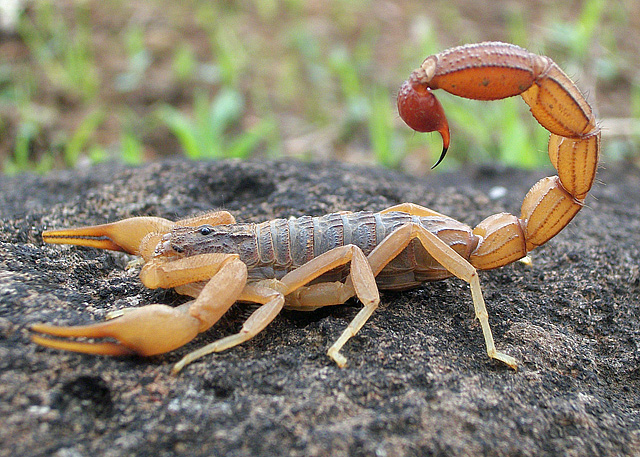
The efficiency of venom delivery systems significantly influences the relationship between yield and toxicity. Snakes have evolved diverse fang arrangements, from the front-fanged design of vipers that can inject venom deeply in a single strike to the rear-fanged configuration of some colubrids that requires chewing to deliver venom effectively. Spiders may use either chelicerae (fang-like mouthparts) that stab downward or forward-facing fangs that pinch together, with each design affecting delivery precision. Marine creatures like the cone snail use harpoon-like radular teeth, while scorpions employ a stinger at the end of their tail for precise venom injection. These anatomical differences affect not only how much venom can be delivered but also how efficiently it reaches target tissues. Some delivery systems allow for deep intramuscular injection, while others only penetrate superficially, significantly affecting venom distribution and absorption rates. The most efficient delivery systems can make even modest amounts of less toxic venom dangerous by ensuring maximum bioavailability, while inefficient delivery might waste large quantities of highly toxic venom.
Medical Implications of Yield vs. Toxicity

From a medical perspective, both venom yield and toxicity significantly impact treatment approaches for envenomation cases. High-yield envenomations often require larger doses of antivenom to neutralize the greater quantity of circulating toxins, increasing the risk of antivenom-related adverse reactions. Highly toxic venoms, even in small amounts, may cause rapid systemic effects requiring immediate medical intervention, with the time between envenomation and treatment becoming a critical factor in patient outcomes. The composition of venom also influences treatment protocols—hemotoxic venoms may require blood products and clotting factors, while neurotoxic venoms might necessitate respiratory support. Medical facilities in regions with venomous species that deliver high yields must maintain larger antivenom stocks, creating logistical and financial challenges, especially in remote or under-resourced areas. The development of more effective, broad-spectrum antivenoms has been driven by the need to address both high-yield and high-toxicity scenarios, though the complexity and variability of venoms continue to present challenges for universal treatment approaches.
Real-World Deadliness: Statistical Analysis
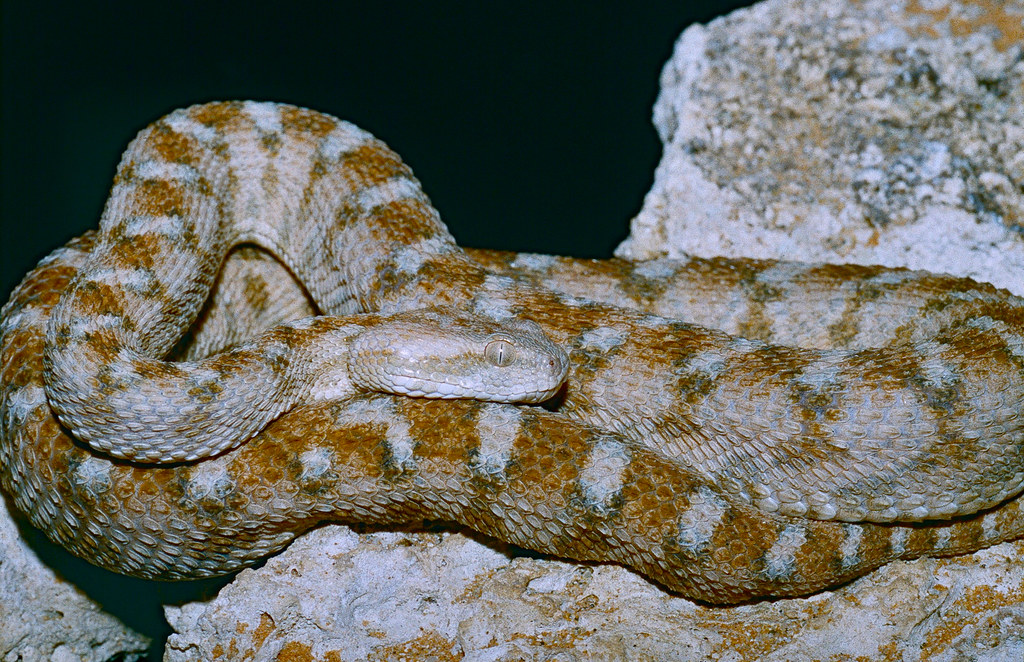
When examining actual human fatality statistics, the deadliest venomous animals often aren’t those with the highest toxicity or yield, but rather those that frequently encounter humans. The saw-scaled viper (Echis species), despite having relatively moderate venom potency compared to many other snakes, causes thousands of deaths annually across Africa, the Middle East, and South Asia due to its wide distribution in populated areas, aggressive temperament, and cryptic coloration. Similarly, the common krait (Bungarus caeruleus) in South Asia has highly toxic venom but causes numerous fatalities primarily because it often enters human dwellings at night. Russell’s viper (Daboia russelii) combines significant yield with moderately high toxicity and a habitat preference for agricultural areas, making it one of the “big four” snakes responsible for most snakebite deaths in India. Conversely, many highly venomous species with extreme toxicity or yield rarely cause human fatalities because they inhabit remote regions or actively avoid human contact. These patterns demonstrate that ecological and behavioral factors—including habitat overlap with humans, defensive aggression, and activity patterns—often outweigh pure venom metrics in determining real-world deadliness.
Evolutionary Perspectives on Venom Development
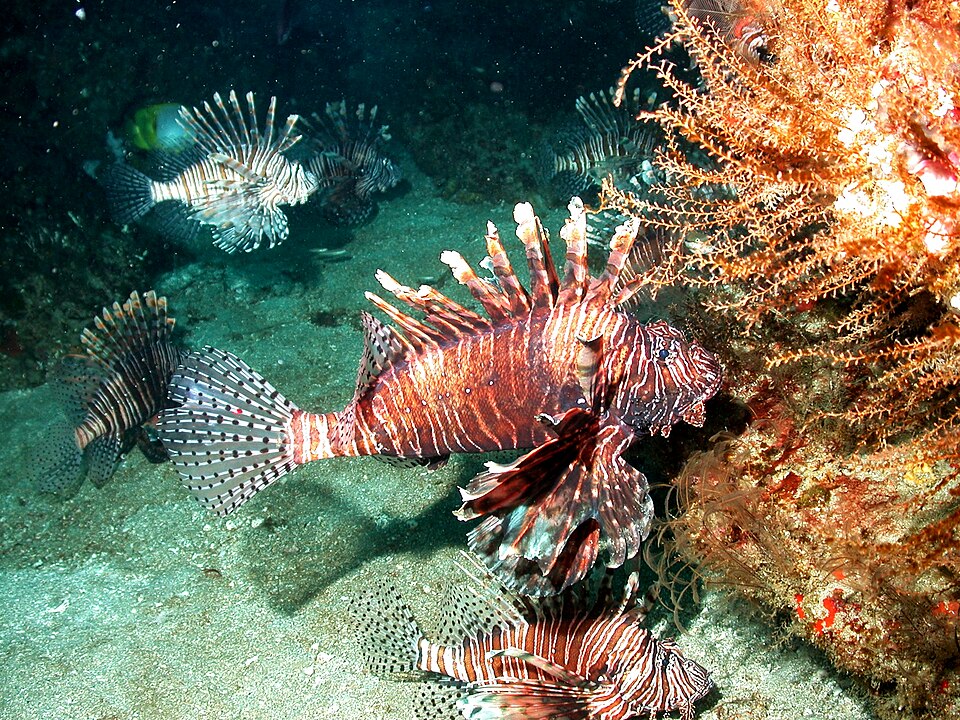
Evolutionary pressures have shaped different strategies in venom yield and toxicity across species, often reflecting specific ecological niches and prey preferences. Species that rely on venom primarily for hunting small prey that can be subdued with minimal venom often evolve highly toxic compounds that work rapidly and efficiently, maximizing the return on metabolic investment in venom production. Conversely, animals that regularly tackle larger prey or face significant threats from predators may develop higher yields to ensure sufficient venom delivery for successful predation or defense. Some species exhibit ontogenetic shifts in venom composition, with juveniles often possessing more toxic venom to compensate for their smaller yield capabilities while adults may produce larger quantities of less concentrated venom. Habitat also influences venom evolution, with marine venomous creatures often developing fast-acting neurotoxins to prevent prey escape in the three-dimensional ocean environment, while terrestrial predators may utilize slower-acting but energy-efficient toxins. These diverse evolutionary strategies demonstrate that the yield-toxicity balance represents specific adaptations to environmental challenges rather than a simple universal progression toward maximum deadliness.
Conclusion: The Complex Calculus of Deadliness
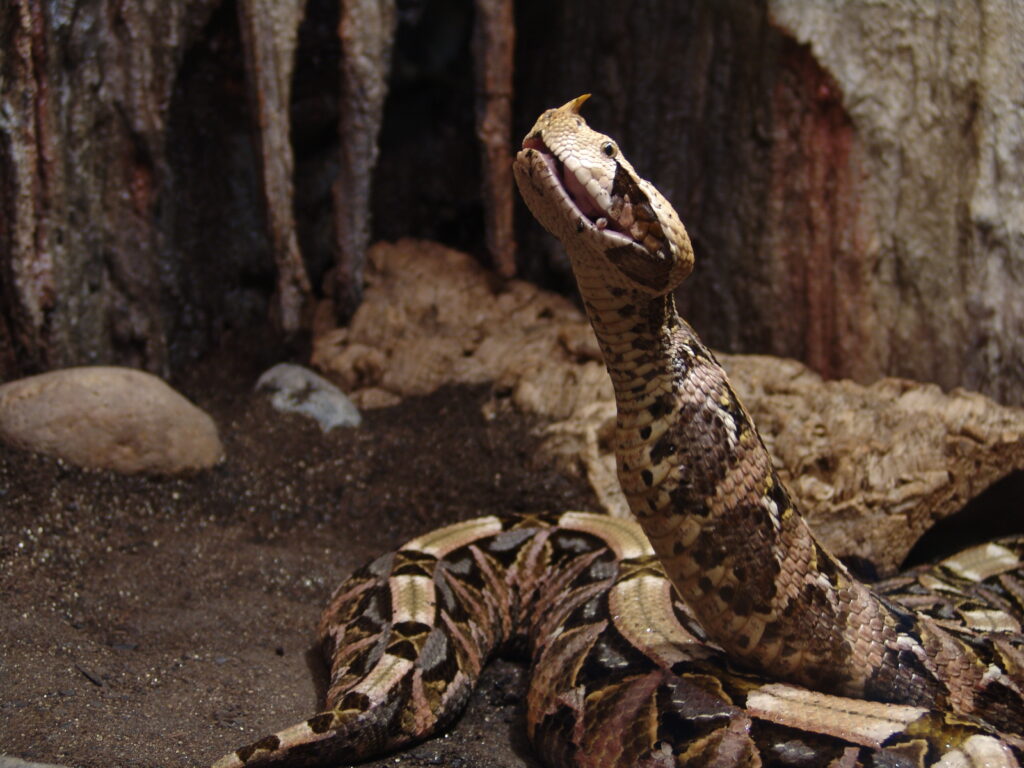
The question of whether venom yield or toxicity contributes more to deadliness has no simple answer—it depends entirely on context. In some cases, extraordinary toxicity makes even tiny amounts of venom lethal, as with the blue-ringed octopus or inland taipan. In others, the sheer volume of venom, as delivered by the king cobra or Gaboon viper, creates danger despite moderate toxicity. Most often, it’s the interplay between these factors, alongside considerations like delivery efficiency, habitat overlap with humans, and behavioral tendencies, that determines real-world threat levels. From a medical perspective, both high-yield and high-toxicity envenomations present unique treatment challenges, requiring different approaches to antivenom administration and supportive care. Understanding the relationship between these factors remains crucial for developing better medical responses, appropriate safety protocols, and conservation strategies that acknowledge the legitimate danger these animals pose while recognizing their ecological importance. Ultimately, respect for venomous creatures, combined with knowledge of their capabilities and behaviors, represents the best approach to minimizing the real-world impacts of these fascinating but potentially deadly animals.


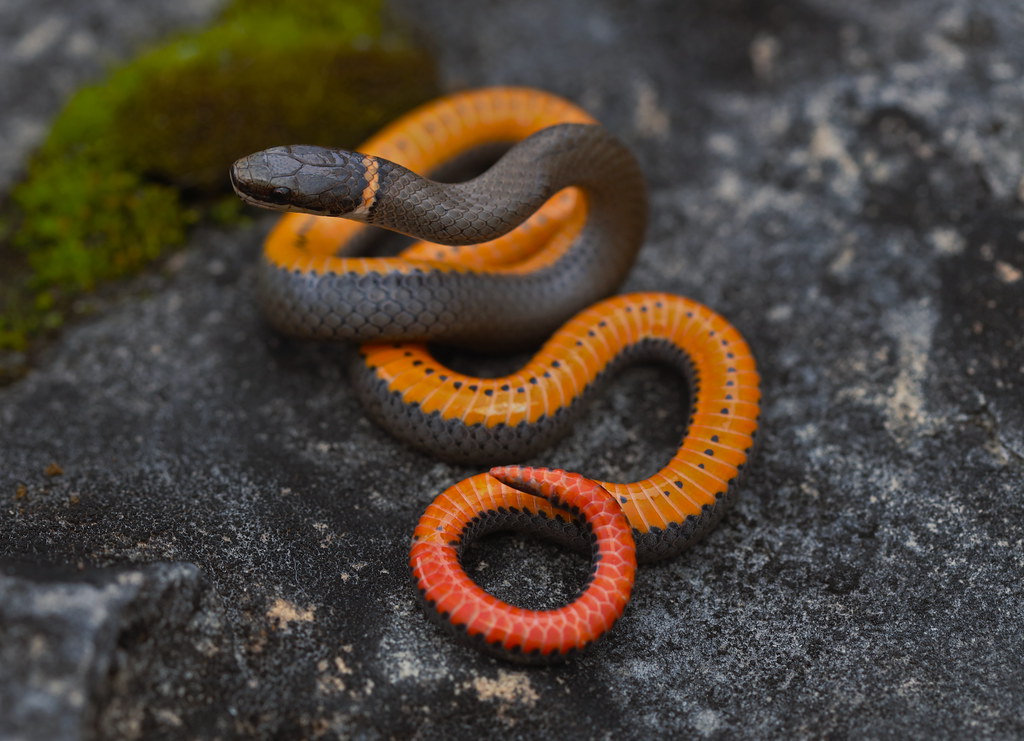
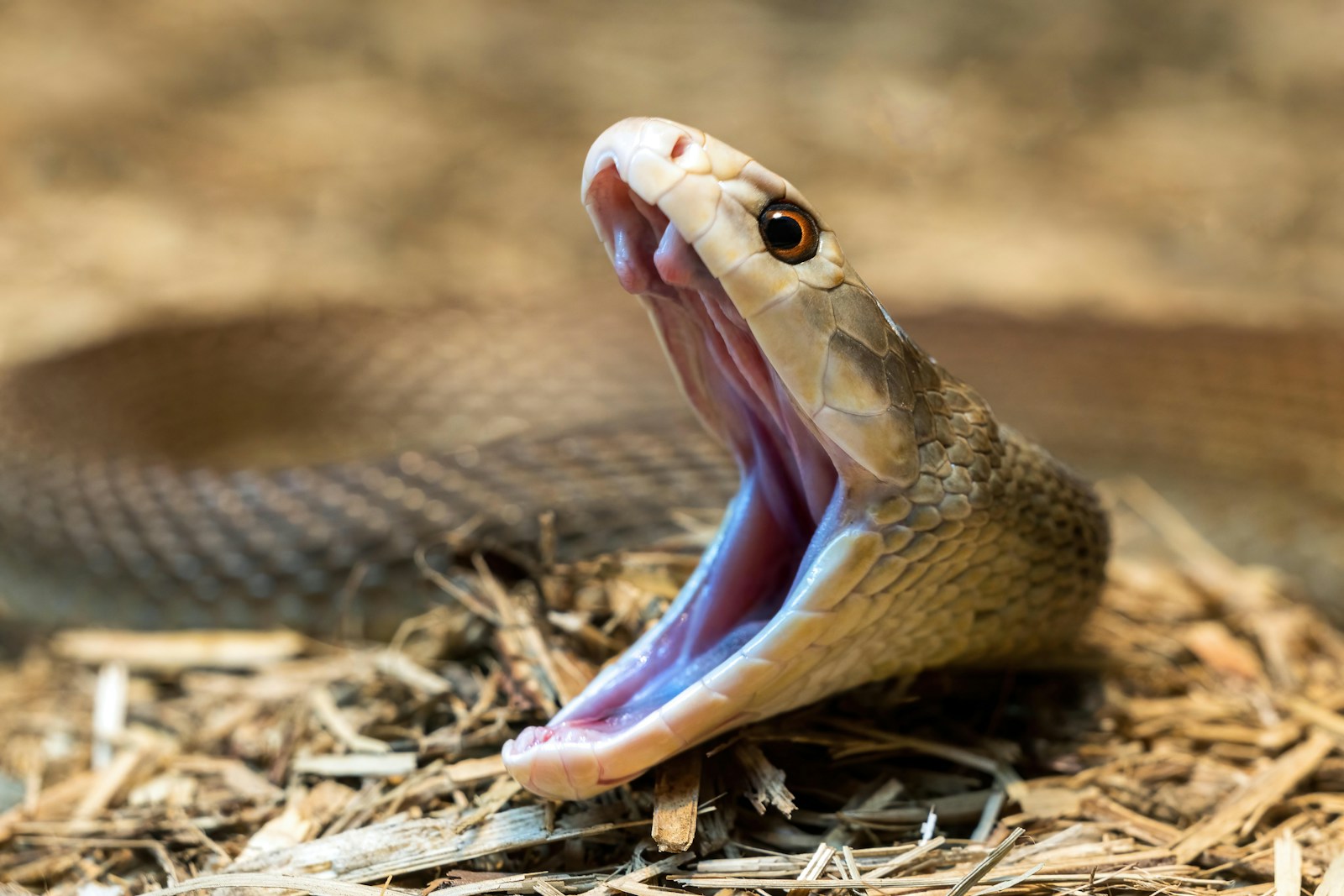
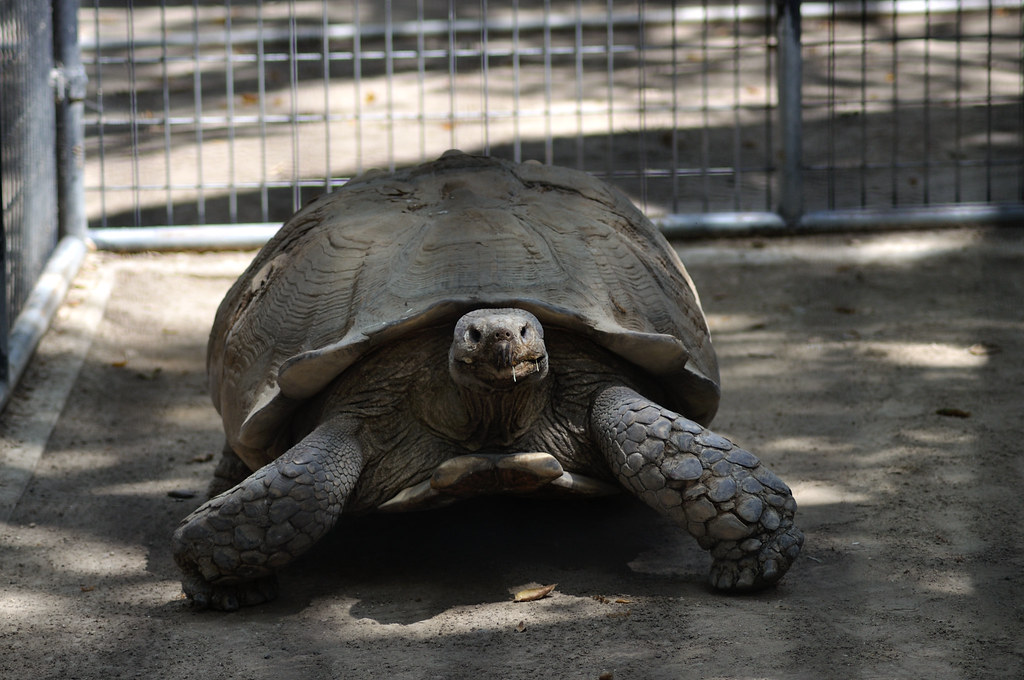
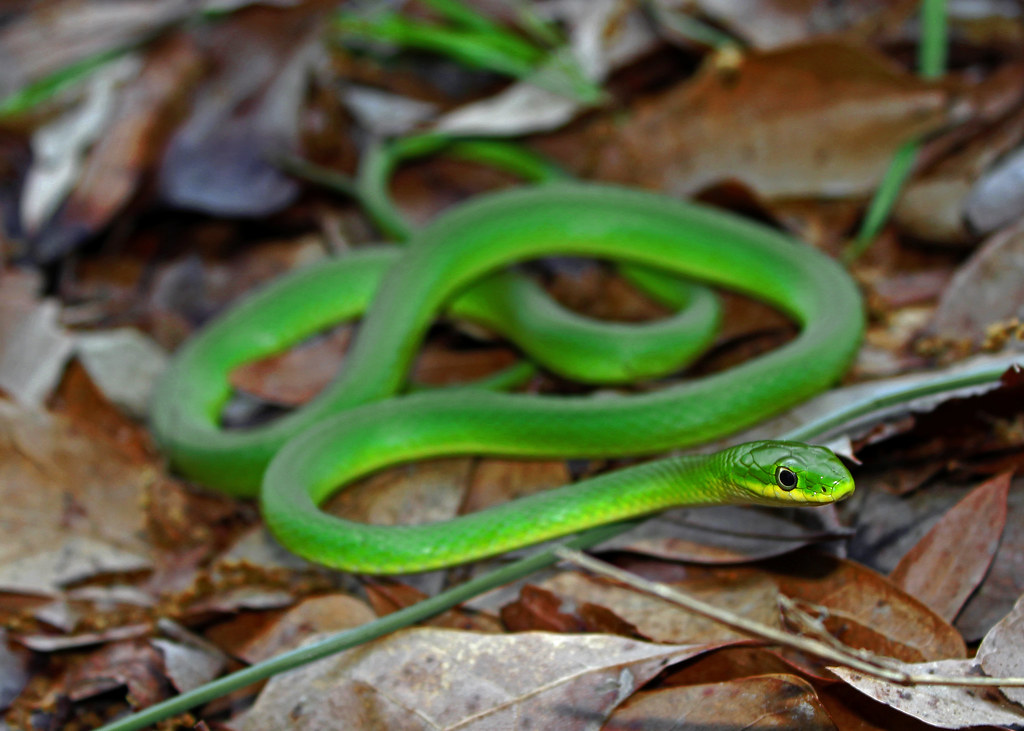
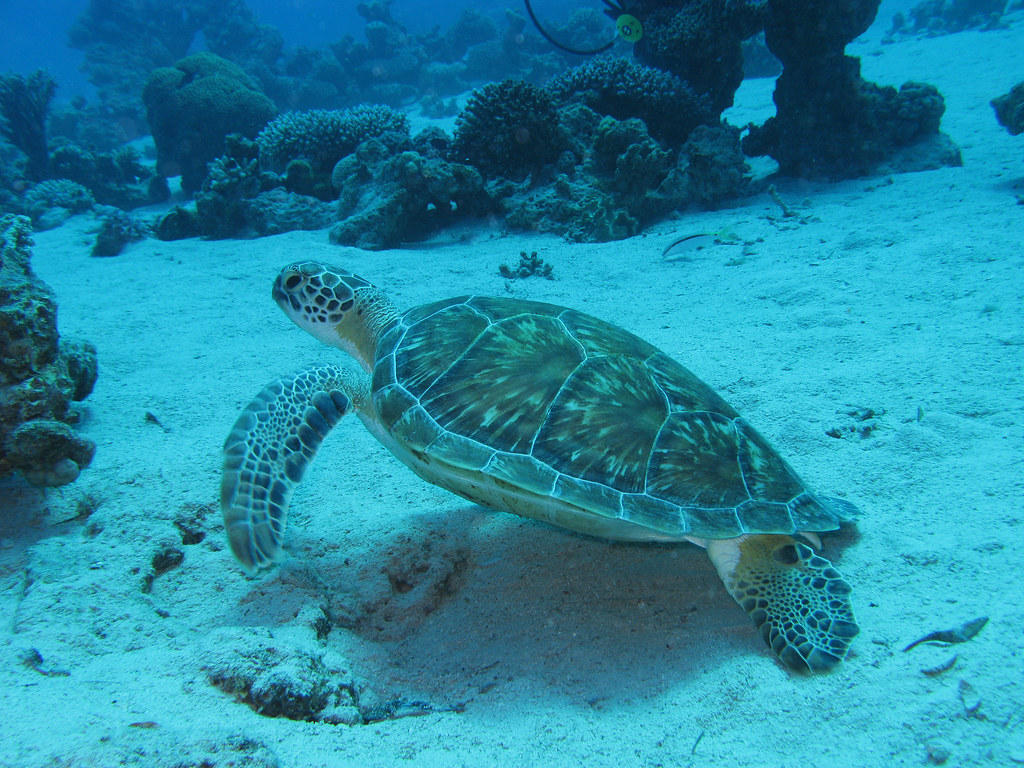

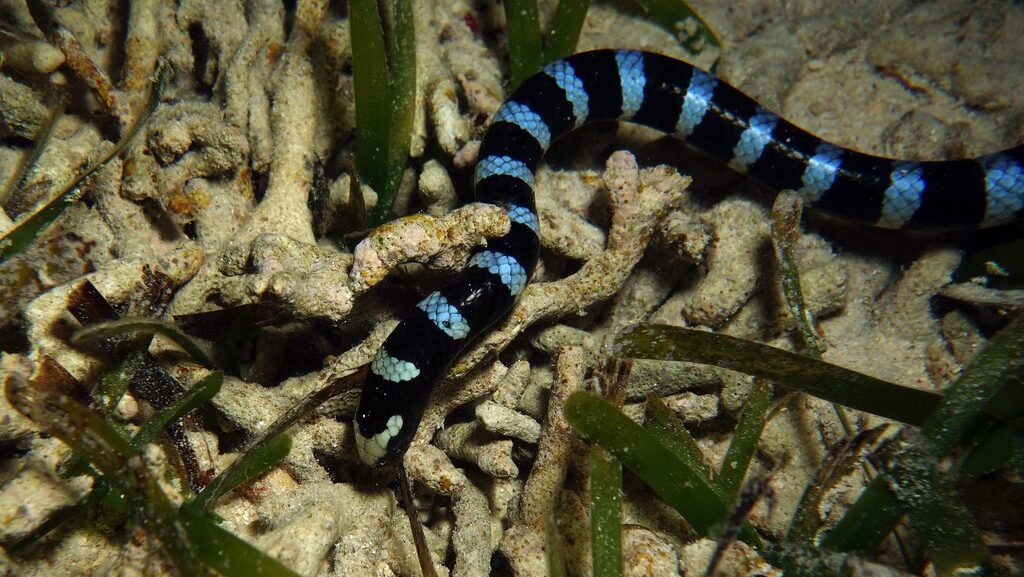

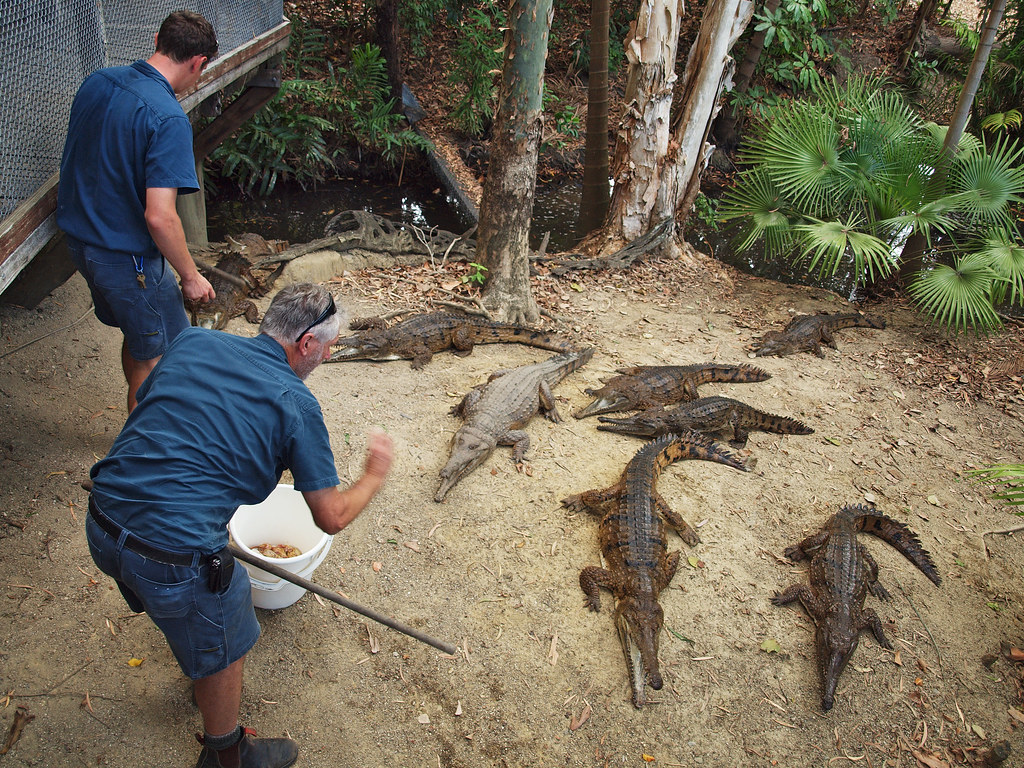



Leave a Reply